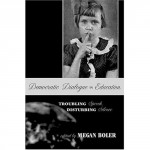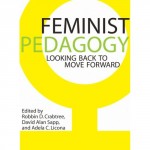It is July 13. Classes start on September 9. I still have some time, but if I don’t want to be freaking out all next month, I better start thinking seriously about my syllabi for Queering Theory and Feminist Pedagogies. Maybe this blog can help me. I have taught both classes before (see here and here) and am keeping a huge portion of the syllabus the same for each class. But, because I always like to mix it up (and to trouble my own teaching practices), I want to add in some new texts. What to choose?
I also need to think about how to set up my blogs for these classes. As I mentioned early on in this blog, I am working on using blogs more in the classroom. One major purpose for writing in this blog this summer was to practice my own blogging and experiment with how I might be able to use blogs in my fall classes. Perhaps the first thing I need to do is figure out movable type 4.0. The University of Minnesota just upgraded the blog system and the interface is much different. I also need to review some of the research on teaching, blogging and feminism that is out there. A good place to start is S&F Online/Blogging Feminism: (Web)sites of Resistance. This is a great resource that I used last spring in my Contemporary Feminist Debates course as a way to get students thinking about the political and critical possibilities for feminist blogging.
 But before I get to my blog research, I want to think about possible texts for Feminist Pedagogies. One text that I am considering adding is: Troubling Speech, Disturbing Silence, edited by Megan Boler. In the introduction, Boler describes a tension concerning hate speech that motivates much of her work: “How can freedom of speech be claimed as a functioning law of society when people are in fact individually and systematically silenced as a result of their identity and/or views” (vii)?
But before I get to my blog research, I want to think about possible texts for Feminist Pedagogies. One text that I am considering adding is: Troubling Speech, Disturbing Silence, edited by Megan Boler. In the introduction, Boler describes a tension concerning hate speech that motivates much of her work: “How can freedom of speech be claimed as a functioning law of society when people are in fact individually and systematically silenced as a result of their identity and/or views” (vii)?
She also discusses her theory of “affirmative action pedagogy” which grounds the book:
I conceptualized and argued for an “affirmative action pedagogy” to illustrate how social hierarchies confer unequal weight and legitimacy to different voices, making dialogue a difficult ideal to acheive in our classrooms. Just as affirmative action seeks to redress historically embedded inequities, so do I suggest that there are times when countering dominant cultural beliefs (especially within the abbreviated time space of a classrom( may require privileging traditionally silenced voices (vii).
The tension between protecting free speech and ensuring democracy, empowering students to speak and regulating students who speak too much are important issues within the feminist classroom. Also important are the ideas of silence (when should we encourage students to speak, when do we respect their silence, what can we learn from silence) and voice (whose voice is heard, what language is used, when is speaking empowering and when is it too dangerous). I like the wide range of topics addressed in this collection and the format: each writer directly responds to the others. I also like the emphasis on racism, democracy and critical pedagogy here. So, I think that I will use this book. The question becomes: should I use the entire collection or just pick a few important essays? One of my strengths as a teacher is how I bring to together a wide range of readings (some of which wouldn’t, upon first glance, seem to connect) under a theme. I have had less success in using whole books. Discussions about entire books seem to take a lot more effort to get going and aren’t always as productive. Hmmm….perhaps I should skim the whole collection again and figure out what to do. Has anyone else out there used this book? Can anyone else relate to my dilemma (a whole text or merely fragments)?
 Another edited collection that I was thinking of using is Feminist Pedagogy: Looking Back to Move Forward. I was initially very excited for it to come out this summer–especially since there seem to be so few new books on feminist pedagogy these days (so much is from the past). But now that I actually have it (as opposed to just glancing at the table of contents online), I am not sure if I want to use it. First, it seems dated. Most of the sources that the two extensive bibliographies at the end of the book cite are from the late ’90s and earlier. I also don’t like the organization, particularly the separating out of race (towards the end of the book and including only 2 essays) from the other topics. Shouldn’t race matters–which is what the race section is called–be infused within much of feminist theories on pedagogy and practice? The question of how we address race and its relationship to class, gender, sexuality, ablebodiedness, global positioning is an important one that feminist teachers have developed many different strategies for dealing with–reading selections, course organiation, class assignments. Maybe including this entire collection could allow us (students and teacher) to critically explore this question of inclusivity, complexity and diversity in terms of categories and experiences of difference?
Another edited collection that I was thinking of using is Feminist Pedagogy: Looking Back to Move Forward. I was initially very excited for it to come out this summer–especially since there seem to be so few new books on feminist pedagogy these days (so much is from the past). But now that I actually have it (as opposed to just glancing at the table of contents online), I am not sure if I want to use it. First, it seems dated. Most of the sources that the two extensive bibliographies at the end of the book cite are from the late ’90s and earlier. I also don’t like the organization, particularly the separating out of race (towards the end of the book and including only 2 essays) from the other topics. Shouldn’t race matters–which is what the race section is called–be infused within much of feminist theories on pedagogy and practice? The question of how we address race and its relationship to class, gender, sexuality, ablebodiedness, global positioning is an important one that feminist teachers have developed many different strategies for dealing with–reading selections, course organiation, class assignments. Maybe including this entire collection could allow us (students and teacher) to critically explore this question of inclusivity, complexity and diversity in terms of categories and experiences of difference?
